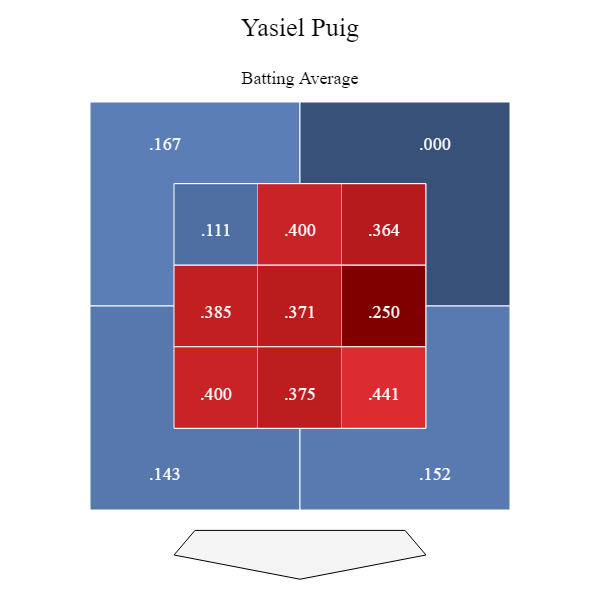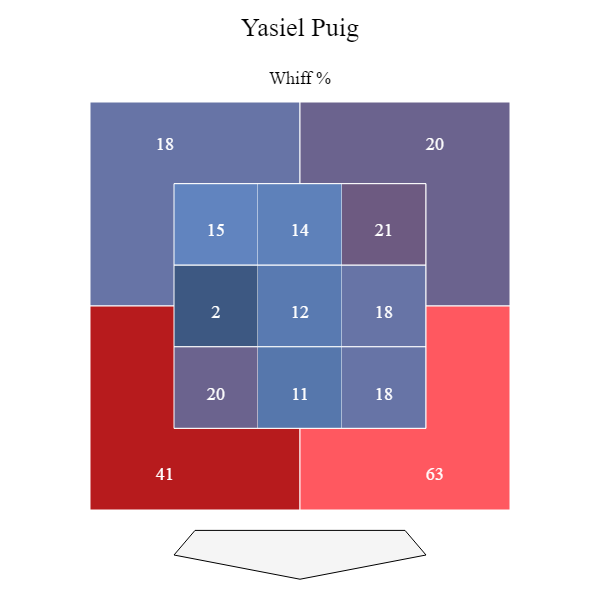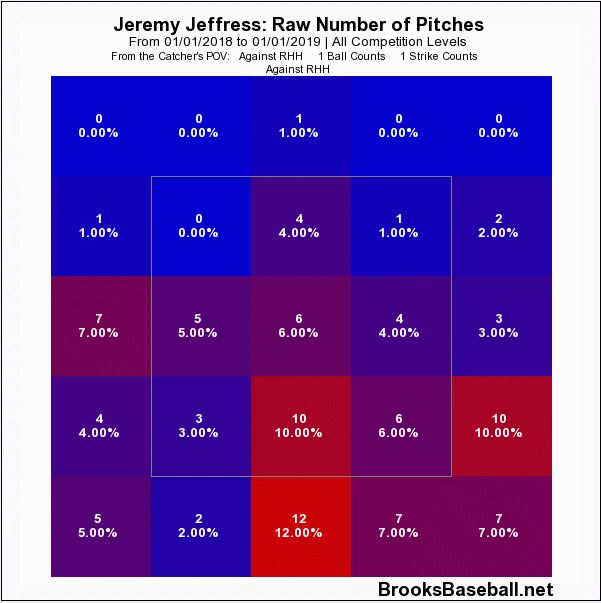(Photo by Nick Wosika/Icon Sportswire)
The top the sixth inning saw Yasiel Puig of the Los Angeles Dodgers put the final nail in the 2018 Milwaukee Brewers‘ coffin. Relief pitcher Jeremy Jeffress, one of the prized arms of the Milwaukee bullpen, was ‘Mr. Hard Luck’ (again), sadly falling short of expectations in the biggest moment of the Brewers’ Postseason.
During the 2018 season, Jeffress carried a 30% K-rate and a 9% BB-rate with a 32 ERA-. The collective assumption would be that he’d be a key cog in the Brewers’ World Series run. It didn’t work out that way. Jeffress finished October with a .410 batting average against through eight appearances.
In 2018, his BAA was .181.
If you only saw Jeffress pitch in the playoffs, you’d think he was terrible in high-leverage situations. His career Win Probability Added based on the Leverage Index is 3.33 (for the unfamiliar, that’s pretty good). Maybe Jeffress wasn’t ready for October pressure. He could be one of those players who become an enigma and fold once the regular season ends (see: pre-2018 Clayton Kershaw).
Or maybe it was just bad luck.
In any case, Jeffress (on paper) shouldn’t have had this much trouble. Last night he came in to relieve Xavier Cedeno, who replaced an absolutely brilliant Josh Hader; no runs allowed in 10-plus innings pitched. He inherited one baserunner from Cedeno and immediately gave up a single to the hot-hitting Justin Turner, who hammered a knuckle curve (arguably Jeffress’s best pitch) for a single that put a runner on first and second with no outs. Jeffress’s knuckle curve was hit a lot this series and in the worst possible situation as I’ll explain.
One reason that pitch has been so successful for Jeffress is his ability to tunnel the pitch with his fastball. He didn’t seem to do it much in the eight games he was a part of in October and certainly didn’t do it when he needed to against Puig.
So with two runners on and nobody out, it looked like Jeffress would implode again. But then he got the vitriol-inducing Manny Machado to pop out and then forced a fielders choice groundout to Cody Bellinger that should have been an inning-ending double play. Jeffress just can’t seem to win.
Up comes Puig, who has been hitting pretty well for the Dodgers. The scouting report for Puig is that, against right-handed pitchers, he does well down and away; he even has an average exit velocity over 80 MPH out of the zone (see Chart 1). Chart 2 shows that even with the huge drop in batting average low and away out of the zone, that general area is a little dangerous to throw to.

CHART 1

CHART 2
Chart 3 shows the 3D chart of the three pitches Jeffress threw to Puig

CHART 3
Jeffress starts Puig off with an up and in 95 MPH two-seam fastball. Great location especially considering the data in Charts 1 and 2. This pitch produced an Effective Velocity, according to Perry Husband’s research, of about 102 EvMPH; a very hard pitch to catch up to and make good contact. The bat didn’t even cross the plate by the time the ball reached the catcher’s glove.
[gfycat data_id=”ScratchyFixedFruitbat”]
Next, Jeffress comes back with another two-seam fastball at 96 MPH which drew the slightest of reactions from Puig. The ball wasn’t really close to reaching the zone (see Chart 3) beyond the recognition point so we’ll ignore that pitch, though it will appear in an overlay later. In terms of EV, we are looking at roughly 90 EvMPH for a difference of 12 EvMPH; especially between the same type of pitch, that is good. He changed eye-level but would have been more effective if he landed the pitch closer to the ‘pressure zone’ and induced a potential whiff when you take a look at Puig’s whiff rate in Chart 4.

CHART 4
Now Jeffress has Puig at an even count. Under 1-1, Chart 5 shows Jeffress’s tendencies to right-handed hitters in 2018.

CHART 5
Jeffress will go down and away in a 1-1 count and you have a 66% chance of seeing the curve and fastball, with Jeffress slightly favoring the former. Jeffress plays it safe (or so he thought) and throws him the knuckle curve (Puig hits the pitch at a .212 clip) middle/down and away. It was a calculated mistake and good planning on Puig’s part.
[gfycat data_id=”ImmaterialRepulsiveHapuku”]
Puig was able to get his arms extended and drove the ball out of the park at 93% of his potential power. Down and away can be a risky location unless you can impart the practice of EV; a long tunnel in conjunction with a large velocity spread. Now, Jeffress did create over a 10 EvMPH spread, but his mistake was the lack of tunnel; with the type of break Jeffress gets with his curve, its necessary for him to disguise it in this situation. Have a look at the overlay of pitch two (two-seam) and pitch three (knuckle curve)
[gfycat data_id=”GrayAdmirableAsp”]
You can see Puig was timing/looking for the curve on both pitches despite the fact pitch two was a fastball. He guessed right on the next pitch.
Here is what Jeffress should have done to make his sequence more effective against Puig. The overlay combines pitch one (two-seam) and pitch three (knuckle curve).
[gfycat data_id=”WideElementaryDrongo”]
Both pitches follow a tunnel until the last minute which would give the hitter little chance to make an accurate decision. Would Puig have made weak contact or even missed the curve completely? Its possible but no more so than the actual result. For all we know, Puig was sitting on the knuckle curve from the get-go. The point is that using the curve in the tunnel, coupled with a large effective velocity spread (around 20 EvMPH, in this fictitious case) may have been enough to disrupt Puig’s timing and allowed the Brewers more of a fighting chance to win the game. Adding to the disappointment, looking back up at Chart 4 you see the location of the home run pitch had yielded the most whiffs out of Puig in 2018.
Mr. Hard Luck, indeed.
Of course, you can’t win if you don’t score and the Brewers couldn’t muster more than one run. However, you never can tell how differently a team reacts going into the bottom of an inning down one versus down four. Jeffress had a rough postseason and generally couldn’t seem to get things right. It was fitting, as terrible as it to say, for a team with so much potential to fall apart in the most unexpected way possible; if I told you Jeffress would be a big part of the destiny of the team, you’d probably guess it was for the right reasons.
